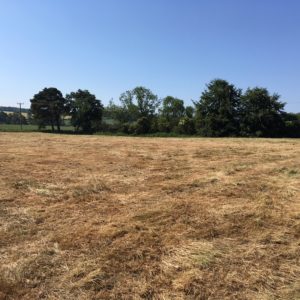Prolonged Dry Weather On Grass
29 June 2018 The heatwave that we experiencing in 2018 won’t in itself restrict the growth of the principal grass i.e. ryegrasses. In fact, their optimum growth temperature is 25 C. The main issue is lack of soil water.
The heatwave that we experiencing in 2018 won’t in itself restrict the growth of the principal grass i.e. ryegrasses. In fact, their optimum growth temperature is 25 C. The main issue is lack of soil water.
This is exacerbated in continually grazed swards where the grass rooting depth is severely restricted by continual loss of leaf material. Thus, the grass is more prone to drought. One major advantage of rotational grazing is that it allows the grass to put down roots to a greater depth.
- Another advantage of rotational grazing and note that a rotation does not necessarily mean intensive daily shifts but at least some benefit could be achieved from weekly or extended rotation.
Silage and hay crops are not so badly affected by drought. However, re-growth after first cut silage may well be slow.
Lack of water also means lack of nutrient uptake. In dry conditions the grass turns yellow through lack of nitrogen, not water. So when the rains do arrive there will be flush of growth from the un-used nitrogen reserve in the soil. Once this flush has declined it is then advisable to return to the usual fertiliser programme with the aim of applying the same amount of NPK as in ‘normal’ years or as required.
It is generally the case that the total amount of grass growth in a year is not significantly affected by the weather conditions, the main difference is on when it grows, managing grass utilisation and when stock demand.
David Lawson, david.lawson@sruc.ac.uk
Sign up to the FAS newsletter
Receive updates on news, events and publications from Scotland’s Farm Advisory Service
